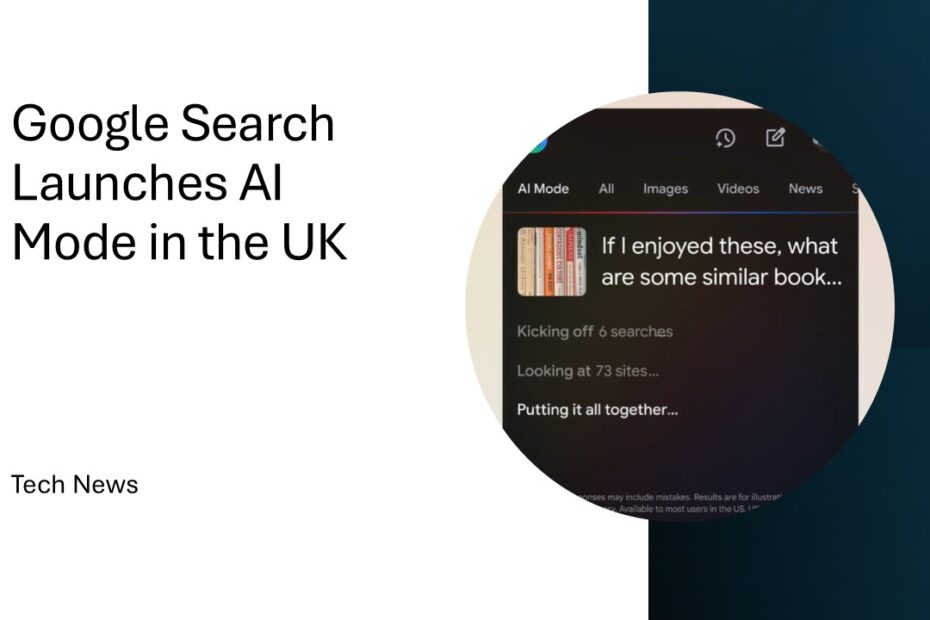Tired of simplifying your messy, complex thoughts for search engines? Imagine just asking Google exactly what’s on your mind – no matter how tangled or niche – and getting back an AI-powered response that genuinely gets it. That’s the promise of AI Mode, Google’s most powerful AI search experience, starting to roll out in the UK.
Table of Contents
- What Makes AI Mode Different from Regular Search
- The Technology Behind It
- Where AI Mode Truly Shines
- True Multimodal Search
- Maintaining Quality and Web Discovery
- The Reality of Early-Stage AI
- Availability and Access
What Makes AI Mode Different from Regular Search
Traditional Google searches work best with short, specific keywords. But AI Mode flips this approach entirely. Think of it as the difference between asking a librarian for “books about birds” versus having a conversation with an ornithologist who can answer, “How do migrating birds know where to go?” The latter gives you richer, more nuanced information that actually satisfies your curiosity.
Google has discovered something fascinating about early AI Mode users: they’re asking questions that are two to three times longer than typical search queries. This isn’t just because they can – it’s because they’re finally able to express what they’re really looking for in natural language.
The Technology Behind It
AI Mode employs what Google calls a “query fan-out technique.” Imagine your complex question as a tree trunk that branches out into multiple smaller questions. The system simultaneously searches for answers to all these sub-questions, then weaves the results together into a comprehensive response.
This process is powered by a custom version of Google’s latest Gemini 2.5 model, which brings advanced reasoning capabilities to search. Rather than simply matching keywords, it actually understands the context and intent behind your questions. It’s like having a research assistant who not only finds information but also understands why you’re asking and what you really need to know.
Where AI Mode Truly Shines
AI Mode excels in three key areas where traditional search often falls short. First, it handles exploratory questions beautifully – those moments when you’re not quite sure what you’re looking for, but you’ll know it when you see it. Second, it excels at comparison tasks, whether you’re weighing different products, destinations, or solutions. Third, it breaks down complex how-to processes into digestible steps that actually make sense.
Consider this real example: “Things to do in Edinburgh this weekend with friends. We’re big foodies who like music but also chill vibes and exploring off the beaten track.” A traditional search would struggle with this multi-layered request, but AI Mode understands you want weekend-specific activities that combine food, music, relaxation, and unique experiences – all filtered for Edinburgh.
True Multimodal Search
One of AI Mode’s most impressive features is its multimodal capabilities. You can interact with it using text, voice, or even images – whatever feels most natural for your question. Spot an interesting plant during a hike? Snap a photo and ask about it. Trying to remember a song? Hum, a few bars into the microphone. This flexibility makes search feel more like a natural conversation than a technical process.
Maintaining Quality and Web Discovery
Google faces an interesting challenge with AI Mode: providing comprehensive AI-powered answers while still driving traffic to the diverse range of websites that make the web valuable. They’ve approached this thoughtfully by ensuring AI Mode responses include prominent links to source materials and related content.
Early data suggest this approach is working well. Users who click through from AI-powered search results tend to spend more time on the websites they visit, indicating higher-quality engagement. Additionally, people are discovering content from a more diverse range of sources when using AI-enhanced search features.
The Reality of Early-Stage AI
Google is transparent about AI Mode’s current limitations. The system is built on Google’s core quality and ranking systems and incorporates new approaches to improve factual accuracy, but it won’t always get everything right. When the system lacks high confidence in its response, it defaults to showing traditional web search results – a sensible safeguard that prioritizes accuracy over impressiveness.
Availability and Access
AI Mode is currently rolling out in the UK, appearing as a dedicated tab on search results pages and within the Google app for both Android and iOS devices. This gradual rollout allows Google to gather user feedback and refine the experience before broader deployment.
Maybe you would like other interesting articles?

